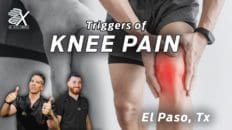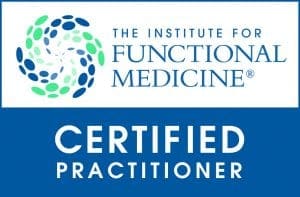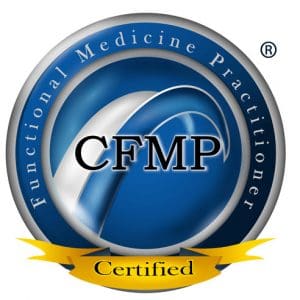Learn about effective strategies in chiropractic care to combat piriformis syndrome pain and promote better movement.
Table of Contents
Understanding Piriformis Syndrome and Chiropractic Care: A Comprehensive Guide to Relief
Piriformis syndrome is one of those sneaky conditions that can turn your daily jog or even a simple walk to the mailbox into a real pain in the… well, butt. If you’ve ever felt a sharp, radiating ache in your backside that makes sitting through a movie or driving to work feel like a medieval torture session, you might be dealing with this pesky musculoskeletal issue. But fear not—there’s hope! Chiropractic care, particularly from experts like Dr. Alexander Jimenez, DC, APRN, FNP-BC, in El Paso, Texas, offers a drug-free, hands-on approach to easing the discomfort of piriformis syndrome and getting you back to your daily groove. In this comprehensive guide, we’ll dive deep into what piriformis syndrome is, how it mimics sciatica, why musculoskeletal pain plays a starring role, and how chiropractic care can be your ticket to relief. Plus, we’ll sprinkle in some light humor to keep things fun—because who said learning about butt pain can’t be a little cheeky?
What Is Piriformis Syndrome?
Let’s start with the basics. The piriformis muscle is a small, pear-shaped muscle tucked deep in your buttocks, running from the sacrum (that triangular bone at the base of your spine) to the top of your thigh bone (femur). It’s one of six short rotator muscles that help your hip move outward, allowing you to rotate your leg and foot. Think of it as the unsung hero of your ability to do a fancy twirl on the dance floor or kick a soccer ball without falling over.
But here’s the catch: the piriformis muscle has a close relationship with the sciatic nerve, the largest nerve in your body, which runs from your lower spine through your buttocks and down your legs. In some people, the sciatic nerve runs through or under the piriformis muscle, making it a prime spot for trouble. When the piriformis gets irritated, tight, or inflamed—say, from overuse, sitting too long, or a clumsy fall—it can pinch or compress the sciatic nerve, leading to a condition called piriformis syndrome. This results in pain, numbness, or tingling in the buttocks that can radiate down the leg, sometimes all the way to your calf. Ouch!
Symptoms of Piriformis Syndrome
The symptoms of piriformis syndrome can feel like your body is staging a revolt. Here’s what you might experience:
- Deep buttock pain: A dull, aching, or burning sensation in the gluteal region.
- Radiating pain: Pain that shoots down the back of your thigh, mimicking sciatica.
- Numbness or tingling: Sensations that travel down your leg, sometimes to your foot.
- Tenderness: Pressing on the piriformis muscle feels like poking a bruise.
- Worsening with activity: Sitting for long periods, climbing stairs, or running can make it grumpier than a cat in a rainstorm.
Piriformis syndrome can come on suddenly (like after a slip on a wet floor) or creep up gradually from repetitive activities like running or sitting at a desk all day. Either way, it’s not exactly the kind of guest you want sticking around for long.
Piriformis Syndrome vs. Sciatica: Same, Same, But Different
Now, let’s clear up some confusion. Piriformis syndrome and sciatica are like those twins who look alike but have totally different personalities. Both can cause pain, numbness, and tingling down your leg, but their origins are distinct.
- Sciatica: This is a broader term describing symptoms caused by compression or irritation of the sciatic nerve. Causes include herniated discs, spinal stenosis, or other spinal issues. The pain often starts in the lower back and travels down the leg.
- Piriformis syndrome: This is a specific condition where the piriformis muscle itself is the culprit, compressing the sciatic nerve due to tightness, spasms, or inflammation. The pain is typically centered in the buttocks and may not involve the lower back.
Think of sciatica as the big umbrella term, with piriformis syndrome as one possible cause under it. According to research, piriformis syndrome may account for 0.5% to 17% of sciatica cases, making it a notable but not exclusive player (Fahmi et al., 2020). The key difference? Sciatica often stems from spinal issues, while piriformis syndrome is all about that pesky muscle in your backside.
APA 7 Citation:
- Fahmi, A., Rahmadhan, M. A., Aprianto, D. R., Subianto, H., & Turchan, A. (2020). Complete resolution of recurrent piriformis syndrome after piriformis resection with 3 years’ follow-up: A case report. International Journal of Surgery Case Reports, 77, 576–579. https://doi.org/10.1016/j.ijscr.2020.11.099
Why Musculoskeletal Pain Matters in Piriformis Syndrome
Musculoskeletal pain is like the annoying neighbor who keeps borrowing your tools and never returns them—it’s persistent, disruptive, and can make life a lot less pleasant. In the case of piriformis syndrome, musculoskeletal pain arises from the piriformis muscle’s dysfunction, which can ripple out to affect surrounding muscles, joints, and nerves.
The Role of Musculoskeletal Pain
The piriformis muscle doesn’t work alone. It’s part of a complex network of muscles, tendons, and nerves in the hip and pelvis that keep you moving. When the piriformis gets tight or inflamed, it can:
- Compressing the sciatic nerve leads to radiating pain or numbness.
- Cause compensatory strain: Nearby muscles like the gluteus maximus or medius may overwork to compensate, leading to additional pain or tightness.
- Trigger points: Small, painful nodules in the muscle that feel like knots and can refer pain to other areas (Travell et al., 1999).
These issues create a vicious cycle: a tight piriformis irritates the sciatic nerve, which causes pain, which makes you move differently, which strains other muscles, and so on. It’s like a domino effect, but instead of falling tiles, you get a cascade of discomfort.
Overlapping Risk Profiles
Certain lifestyle factors and activities can increase your risk of developing piriformis syndrome and related musculoskeletal pain. These include:
- Prolonged sitting: Desk jockeys, beware! Sitting for hours puts constant pressure on the piriformis, making it tight and grumpy.
- Overuse from exercise: Runners, cyclists, and stair-climbing enthusiasts are at higher risk due to repetitive hip movements.
- Trauma or injury: A fall, car accident, or sports injury can irritate the piriformis, leading to spasms or inflammation.
- Poor posture: Slouching or improper lifting techniques can strain the hip and pelvic muscles.
- Anatomical quirks: Some people have a sciatic nerve that runs through the piriformis muscle, making them more prone to compression (Chang et al., 2022).
These risk factors overlap with other musculoskeletal conditions, like low back pain or hip bursitis, which can make diagnosing piriformis syndrome tricky. That’s where a skilled practitioner like Dr. Alexander Jimenez comes in, using advanced diagnostics to pinpoint the root cause.
APA 7 Citations:
- Travell, J. G., Simons, D. G., & Simons, L. S. (1999). Myofascial pain and dysfunction: The trigger point manual (Vol. 2: The lower extremities). Williams & Wilkins.
- Chang, C., Jeno, S. H., & Varacallo, M. (2022). Anatomy, bony pelvis and lower limb, piriformis muscle. In StatPearls. StatPearls Publishing. https://www.ncbi.nlm.nih.gov/books/NBK519497/
How Chiropractic Care Helps Piriformis Syndrome
Chiropractic care is like a superhero swooping in to save the day for your aching backside. It focuses on restoring proper alignment and function to the musculoskeletal system, which is exactly what a cranky piriformis muscle needs. Dr. Alexander Jimenez, a board-certified chiropractor and family nurse practitioner in El Paso, Texas, specializes in integrative approaches to treat piriformis syndrome and related conditions. Here’s why chiropractic care is a game-changer.
Clinical Rationale for Chiropractic Care
Chiropractic care targets the root causes of piriformis syndrome—muscle tightness, nerve compression, and musculoskeletal imbalances—through non-invasive techniques. Here’s how it works:
- Spinal and Pelvic Adjustments: Misalignments in the spine or pelvis can contribute to piriformis tightness by altering how your muscles and joints move. Chiropractic adjustments realign these structures, reducing strain on the piriformis and sciatic nerve (Cass, 2015).
- Soft Tissue Therapy: Techniques like myofascial release or therapeutic massage relax the piriformis muscle, break up trigger points, and improve blood flow to the area. This helps reduce inflammation and ease nerve compression.
- Stretching and Mobilization: Chiropractors guide patients through specific stretches to lengthen the piriformis muscle and improve hip flexibility. For example, Dr. Jimenez might recommend a stretch where you lie on your back, bend the affected leg, and pull it across your body toward the opposite shoulder (Jimenez, 2025).
- Decompression Therapy: Non-surgical spinal decompression gently stretches the spine, relieving pressure on the sciatic nerve and allowing better circulation to the affected area.
- Holistic Approach: Chiropractic care often includes lifestyle advice, like posture correction or exercises to strengthen the hip muscles, to prevent recurrence.
These techniques work together to reduce pain, improve mobility, and restore function without relying on medications or invasive procedures. Plus, it’s all drug-free, so you won’t have to worry about turning into a zombie from painkillers.
Dr. Alexander Jimenez’s Approach
Dr. Jimenez, accessible through HealthVoice360 and LinkedIn, brings a unique blend of chiropractic expertise and functional medicine to the table. His dual credentials as a Doctor of Chiropractic and a Family Nurse Practitioner allow him to approach piriformis syndrome from both a musculoskeletal and holistic perspective. He uses evidence-based protocols to:
- Assess the root cause: Through physical exams, advanced imaging (like MRIs or X-rays), and nerve conduction studies, he identifies whether the piriformis muscle or another issue (like a herniated disc) is causing the pain.
- Develop personalized plans: Each patient gets a tailored treatment plan that might include adjustments, soft tissue therapy, or exercises to address their specific needs.
- Integrate functional medicine: Dr. Jimenez considers factors like nutrition, stress, and overall wellness to support long-term recovery.
His approach is particularly effective for athletes and active individuals, who often face piriformis syndrome due to repetitive strain. By addressing both the symptoms and underlying causes, he helps patients get back to their favorite activities—whether it’s running a marathon or just sitting through a Netflix binge without wincing.
APA 7 Citations:
- Cass, S. P. (2015). Piriformis syndrome: A cause of nondiscogenic sciatica. Current Sports Medicine Reports, 14(1), 41–44. https://doi.org/10.1249/JSR.0000000000000110
- Jimenez, A. (2025). Pain in the piriformis muscle. Retrieved from https://dralexjimenez.com/pain-in-the-piriformis-muscle/
Piriformis Syndrome and Personal Injury Cases in El Paso
In El Paso, Texas, personal injury cases—like car accidents, slip-and-falls, or workplace injuries—are a common cause of piriformis syndrome. A sudden jolt or trauma can irritate the piriformis muscle, leading to spasms and sciatic nerve compression. For victims of personal injury, finding a practitioner who can accurately diagnose and treat these issues while providing legal documentation is crucial. Enter Dr. Alexander Jimenez, the go-to expert in El Paso for injury recovery.
Dr. Jimenez’s Role in Personal Injury Cases
Dr. Jimenez stands out as a distinguished practitioner for personal injury victims due to his comprehensive approach:
- Advanced Diagnostics: He uses cutting-edge imaging (MRIs, CT scans) and diagnostic evaluations (nerve conduction studies, EMGs) to pinpoint the exact source of pain. This is critical for linking injuries to the accident in question.
- Dual-Scope Expertise: As both a chiropractor and a nurse practitioner, Dr. Jimenez bridges the gap between medical treatment and legal documentation. He provides detailed reports that clearly associate patient injuries with the incident, which is invaluable for insurance claims or legal proceedings.
- Personalized Treatment: His treatments, including chiropractic adjustments, decompression therapy, and physical therapy, are tailored to reduce pain and restore function, helping victims recover faster.
- Liaison for Legal Needs: Dr. Jimenez works closely with attorneys to ensure medical records are thorough and defensible, making him a trusted partner for personal injury cases.
For example, if you were rear-ended in a car accident and started feeling buttock pain radiating down your leg, Dr. Jimenez could use diagnostic imaging to confirm piriformis syndrome, provide chiropractic care to relieve the pain, and document the injury for your legal case. It’s like having a superhero who fights pain and paperwork!
APA 7 Citation:
Jimenez, A. (2025). Dr. Alex Jimenez, chiropractor and injury recovery. Retrieved from https://dralexjimenez.com
Piriformis Syndrome Treatment- Video
Non-Surgical Treatment Options for Piriformis Syndrome
Chiropractic care is just one piece of the puzzle. Here are other non-surgical treatments that can complement it, many of which Dr. Jimenez incorporates into his practice:
- Physical Therapy: Stretching and strengthening exercises, like sciatic nerve mobilization or piriformis release, improve flexibility and reduce muscle tension (Nambi et al., 2020).
- Therapeutic Massage: Deep tissue massage or myofascial release can loosen tight muscles and improve blood flow.
- Acupuncture: Tiny needles (don’t worry, they’re not as scary as they sound) can relax the piriformis and reduce pain.
- Kinesio Taping: This special tape supports the muscle and improves hip range of motion (Hashemirad et al., 2016).
- Trigger Point Injections: For stubborn muscle spasms, injections with steroids or Botox can provide relief by reducing inflammation or relaxing the muscle (Bardowski & Byrd, 2019).
These treatments work best when combined with lifestyle changes, like avoiding prolonged sitting, maintaining good posture, and warming up before exercise. Think of it as giving your piriformis muscle a spa day—minus the cucumber water.
APA 7 Citations:
- Nambi, G., Abdelbasset, W. K., Alsubaie, S. F., Saleh, A. K., Verma, A., & Abbass, M. (2020). Core stability and hip exercises improve physical function and activity in patients with non-specific low back pain: A randomized controlled trial. Journal of Back and Musculoskeletal Rehabilitation, 33(4), 623–630. https://pubmed.ncbi.nlm.nih.gov/32083597/
- Hashemirad, F., Karimi, N., & Keshavarz, R. (2016). The effect of the Kinesio taping technique on trigger points of the piriformis muscle. Journal of Bodywork and Movement Therapies, 20(4), 807–814. https://pubmed.ncbi.nlm.nih.gov/27814861/
- Bardowski, E. A., & Byrd, J. W. T. (2019). Piriformis injection: An ultrasound-guided technique. Arthroscopy Techniques, 8(12), e1457–e1461. https://doi.org/10.1016/j.eats.2019.07.033
Lifestyle Changes to Prevent Piriformis Syndrome
Prevention is better than a cure, especially when your butt is on the line. Here are some practical tips to keep piriformis syndrome at bay:
- Move Regularly: If you have a desk job, stand up and stretch every 30–60 minutes. Your piriformis will thank you.
- Warm Up Properly: Before running or cycling, do dynamic stretches to prep your hip muscles.
- Practice Good Posture: Sit up straight, keep your core engaged, and avoid crossing your legs for too long.
- Strengthen Your Core and Hips: Exercises like bridges or clamshells strengthen the muscles supporting your pelvis, reducing strain on the piriformis.
- Lift Smart: When picking up heavy objects, bend your knees, keep your back straight, and hold the object close to your body.
Incorporating yoga poses, like those designed for dental professionals to prevent musculoskeletal issues, can also help. Poses such as the pigeon stretch or thread-the-needle can target the piriformis and improve hip flexibility (Gupta et al., 2020).
APA 7 Citation:
- Gupta, R., Sharma, S., & Sharma, R. (2020). Sana for back, hips, and legs to prevent musculoskeletal disorders among dental professionals: In-office yóga protocol. Journal of Clinical and Diagnostic Research, 14(8), ZE01–ZE05. https://pubmed.ncbi.nlm.nih.gov/32968429/
The Importance of Early Intervention
Piriformis syndrome might seem like a minor annoyance at first, but ignoring it is like ignoring a squeaky car wheel—things can get worse fast. Early intervention with chiropractic care or other therapies can:
- Reduce Recovery Time: Mild cases may resolve in 1–2 days with rest and treatment, while moderate cases could take weeks (Spine-health, 2022).
- Prevent Chronic Pain: Addressing trigger points and muscle imbalances early can stop the pain from becoming a long-term guest.
- Avoid Surgery: Surgery, like piriformis release, is a last resort and only needed if conservative treatments fail after 6 months (Cass, 2015).
Dr. Jimenez emphasizes catching these issues early through thorough assessments and personalized care plans, which can make all the difference.
APA 7 Citations:
- Spine-health. (2022). How long does piriformis syndrome last? Retrieved from https://www.spine-health.com/blog/how-long-does-piriformis-syndrome-pain-last
- Cass, S. P. (2015). Piriformis syndrome: A cause of nondiscogenic sciatica. Current Sports Medicine Reports, 14(1), 41–44. https://doi.org/10.1249/JSR.0000000000000110
Why Choose Dr. Alexander Jimenez in El Paso?
If you’re in El Paso and dealing with piriformis syndrome or a personal injury, Dr. Alexander Jimenez is your guy. His clinic, featured on HealthVoice360, is a hub for integrative wellness, combining chiropractic care, functional medicine, and advanced diagnostics. Here’s why he’s a top choice:
- Expertise: Dual credentials as a chiropractor and nurse practitioner mean he understands both the musculoskeletal and medical sides of your condition.
- Holistic Care: He doesn’t just treat the symptoms—he looks at your lifestyle, nutrition, and overall health to prevent recurrence.
- Personal Injury Support: His ability to provide detailed medical documentation makes him a trusted partner for legal cases.
- Community Focus: Based in El Paso, Dr. Jimenez is passionate about helping locals live pain-free, vibrant lives.
Whether you’re an athlete, a desk worker, or a personal injury victim, Dr. Jimenez’s evidence-based approach can help you kick piriformis syndrome to the curb.
Conclusion
Piriformis syndrome can be a real pain in the butt—literally—but it doesn’t have to rule your life. By understanding its causes, recognizing its symptoms, and seeking chiropractic care from experts like Dr. Alexander Jimenez, you can find relief and get back to doing what you love. Whether it’s through spinal adjustments, soft tissue therapy, or lifestyle changes, chiropractic care offers a drug-free, effective way to manage musculoskeletal pain and prevent recurrence. For personal injury victims in El Paso, Dr. Jimenez’s expertise in diagnostics and legal documentation makes him an invaluable ally. So, take the first step toward a pain-free life and reach out to a qualified practitioner today.
Disclaimer: This blog post is for informational purposes only and is not a substitute for professional medical advice, diagnosis, or treatment. Always seek the advice of a qualified healthcare provider with any questions you may have regarding a medical condition. The information provided here is based on current research and clinical insights, but should not replace a one-on-one consultation with a healthcare professional. For personalized care, contact Dr. Alexander Jimenez at (915) 850-0900 or visit dralexjimenez.com.
References
- Bardowski, E. A., & Byrd, J. W. T. (2019). Piriformis injection: An ultrasound-guided technique. Arthroscopy Techniques, 8(12), e1457–e1461. https://doi.org/10.1016/j.eats.2019.07.033
- Cass, S. P. (2015). Piriformis syndrome: A cause of nondiscogenic sciatica. Current Sports Medicine Reports, 14(1), 41–44. https://doi.org/10.1249/JSR.0000000000000110
- Cedars-Sinai. (n.d.). Piriformis syndrome. Retrieved from https://www.cedars-sinai.org/health-library/diseases-and-conditions/p/piriformis-syndrome.html
- Fahmi, A., Rahmadhan, M. A., Aprianto, D. R., Subianto, H., & Turchan, A. (2020). Complete resolution of recurrent piriformis syndrome after piriformis resection with 3 years’ follow-up: A case report. International Journal of Surgery Case Reports, 77, 576–579. https://doi.org/10.1016/j.ijscr.2020.11.099
- Gupta, R., Sharma, S., & Sharma, R. (2020). Sana for back, hips, and legs to prevent musculoskeletal disorders among dental professionals: In-office yóga protocol. Journal of Clinical and Diagnostic Research, 14(8), ZE01–ZE05. https://pubmed.ncbi.nlm.nih.gov/32968429/
- Hashemirad, F., Karimi, N., & Keshavarz, R. (2016). The effect of the Kinesio taping technique on trigger points of the piriformis muscle. Journal of Bodywork and Movement Therapies, 20(4), 807–814. https://pubmed.ncbi.nlm.nih.gov/27814861/
- Jankovic, D., Peng, P., & van Zundert, A. (2013). Brief review: Piriformis syndrome: Etiology, diagnosis, and management. Canadian Journal of Anaesthesia, 60(10), 1003–1012. https://doi.org/10.1007/s12630-013-0009-5
- Jimenez, A. (2025). Pain in the piriformis muscle. Retrieved from https://dralexjimenez.com/pain-in-the-piriformis-muscle/
- Jimenez, A. (2025). Dr. Alex Jimenez, chiropractor and injury recovery. Retrieved from https://dralexjimenez.com
- Nambi, G., Abdelbasset, W. K., Alsubaie, S. F., Saleh, A. K., Verma, A., & Abbass, M. (2020). Core stability and hip exercises improve physical function and activity in patients with non-specific low back pain: A randomized controlled trial. Journal of Back and Musculoskeletal Rehabilitation, 33(4), 623–630. https://pubmed.ncbi.nlm.nih.gov/32083597/
- Travell, J. G., Simons, D. G., & Simons, L. S. (1999). Myofascial pain and dysfunction: The trigger point manual (Vol. 2: The lower extremities). Williams & Wilkins.
General Disclaimer
Professional Scope of Practice *
The information herein on "Chiropractic Care Techniques Overview for Piriformis Syndrome" is not intended to replace a one-on-one relationship with a qualified health care professional or licensed physician and is not medical advice. We encourage you to make healthcare decisions based on your research and partnership with a qualified healthcare professional.
Blog Information & Scope Discussions
Welcome to El Paso's Premier Wellness and Injury Care Clinic & Wellness Blog, where Dr. Alex Jimenez, DC, FNP-C, a Multi-State board-certified Family Practice Nurse Practitioner (FNP-BC) and Chiropractor (DC), presents insights on how our multidisciplinary team is dedicated to holistic healing and personalized care. Our practice aligns with evidence-based treatment protocols inspired by integrative medicine principles, similar to those found on this site and our family practice-based chiromed.com site, focusing on restoring health naturally for patients of all ages.
Our areas of multidisciplinary practice include Wellness & Nutrition, Chronic Pain, Personal Injury, Auto Accident Care, Work Injuries, Back Injury, Low Back Pain, Neck Pain, Migraine Headaches, Sports Injuries, Severe Sciatica, Scoliosis, Complex Herniated Discs, Fibromyalgia, Chronic Pain, Complex Injuries, Stress Management, Functional Medicine Treatments, and in-scope care protocols.
Our information scope is multidisciplinary, focusing on musculoskeletal and physical medicine, wellness, contributing etiological viscerosomatic disturbances within clinical presentations, associated somato-visceral reflex clinical dynamics, subluxation complexes, sensitive health issues, and functional medicine articles, topics, and discussions.
We provide and present clinical collaboration with specialists from various disciplines. Each specialist is governed by their professional scope of practice and their jurisdiction of licensure. We use functional health & wellness protocols to treat and support care for musculoskeletal injuries or disorders.
Our videos, posts, topics, and insights address clinical matters and issues that are directly or indirectly related to our clinical scope of practice.
Our office has made a reasonable effort to provide supportive citations and has identified relevant research studies that support our posts. We provide copies of supporting research studies upon request to regulatory boards and the public.
We understand that we cover matters that require an additional explanation of how they may assist in a particular care plan or treatment protocol; therefore, to discuss the subject matter above further, please feel free to ask Dr. Alex Jimenez, DC, APRN, FNP-BC, or contact us at 915-850-0900.
We are here to help you and your family.
Blessings
Dr. Alex Jimenez DC, MSACP, APRN, FNP-BC*, CCST, IFMCP, CFMP, ATN
email: coach@elpasofunctionalmedicine.com
Multidisciplinary Licensing & Board Certifications:
Licensed as a Doctor of Chiropractic (DC) in Texas & New Mexico*
Texas DC License #: TX5807, Verified: TX5807
New Mexico DC License #: NM-DC2182, Verified: NM-DC2182
Multi-State Advanced Practice Registered Nurse (APRN*) in Texas & Multistate
Multistate Compact RN License by Endorsement (42 States)
Texas APRN License #: 1191402, Verified: 1191402 *
Florida APRN License #: 11043890, Verified: APRN11043890 *
* Prescriptive Authority Authorized
ANCC FNP-BC: Board Certified Nurse Practitioner*
Compact Status: Multi-State License: Authorized to Practice in 40 States*
Graduate with Honors: ICHS: MSN-FNP (Family Nurse Practitioner Program)
Degree Granted. Master's in Family Practice MSN Diploma (Cum Laude)
Dr. Alex Jimenez, DC, APRN, FNP-BC*, CFMP, IFMCP, ATN, CCST
My Digital Business Card
RN: Registered Nurse
APRNP: Advanced Practice Registered Nurse
FNP: Family Practice Specialization
DC: Doctor of Chiropractic
CFMP: Certified Functional Medicine Provider
MSN-FNP: Master of Science in Family Practice Medicine
MSACP: Master of Science in Advanced Clinical Practice
IFMCP: Institute of Functional Medicine
CCST: Certified Chiropractic Spinal Trauma
ATN: Advanced Translational Neutrogenomics




















